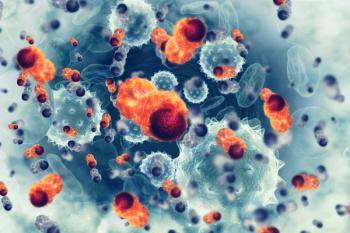
- ONCOLOGY Vol 16 No 11
- Volume 16
- Issue 11
Monitoring Pregnancy Is Key After Wilms’ Treatment
Women who received radiation therapy for Wilms’ Tumor are at increased risk of complications during pregnancy and, therefore, should be carefully assessed and monitored by their obstetricians. These conclusions were part of a National Wilms’
Women who received radiation therapy for Wilms’ Tumor are at increased risk of complications during pregnancy and, therefore, should be carefully assessed and monitored by their obstetricians. These conclusions were part of a National Wilms’ Tumor Study Group (NWTSG) report published in the Journal of Clinical Oncology (20:2506-2513, 2002). Daniel M. Green, MD, department of pediatrics, Roswell Park Cancer Institute, was the lead author.
"This is the first study to evaluate the risk of increased complicationsof pregnancy due to prior Wilms’ tumor treatment," said Dr. Green."We found that female survivors of Wilms’ tumor who were treated withradiation are at increased risk for early or threatened labor and that theirchildren are more likely to be premature and may be at increased risk of certaincongenital defects. These increased complications were not seen in the partnersof male survivors of Wilms’ tumor who received the same treatment."
Complications and Congenital Malformations
The study was limited to pregnancies of patients or partners of patients whoreceived either no abdominal irradiation or only flank irradiation as part oftheir initial course of treatment. The NWTSG reviewed reports of 427 pregnancieswith a duration of 20 weeks or more, including 409 liveborn singletons. The mostcommon complications identified during pregnancy included malposition of thefetus and early or threatened labor. Offspring of the irradiated women were morelikely to have a low birthweight and be premature (less than 36 weeks’gestation). An increased percentage had one or more congenital malformationssuch as cleft lip and palate, undescended testes, or clubfoot.
"We found that the identified complications were more frequent amongwomen who received a higher radiation therapy dose," said Dr. Green."Additional research is needed to validate these observations and determineif survivors who received lower flank radiation therapy are less likely to havethese complications with a pregnancy. Survivors and their physicians must beaware of these issues when guiding a pregnancy to term."
Articles in this issue
about 23 years ago
Study Reveals Benefits of Drug Pump for Cancer Painabout 23 years ago
Three Themes to Guide von Eschenbach as NCI Directorabout 23 years ago
Update: AIDS United States, 2000about 23 years ago
Rituxan Delays Disease Progression in Indolent Non- Hodgkin’s Lymphomaabout 23 years ago
Radiation Therapy Alone Can Be Used to Treat Rectal Cancerabout 23 years ago
Oncologic Imaging, Second EditionNewsletter
Stay up to date on recent advances in the multidisciplinary approach to cancer.

















































































